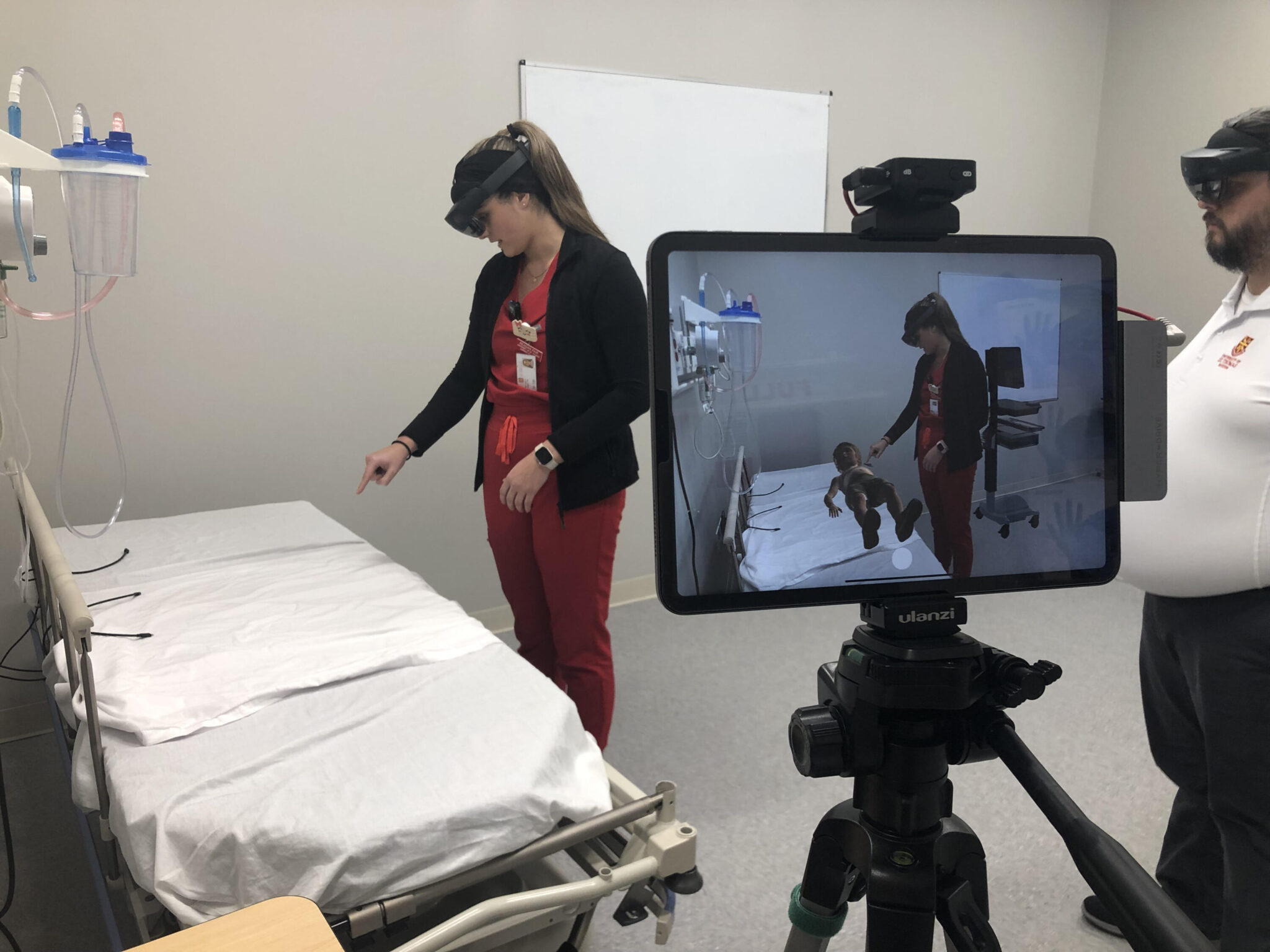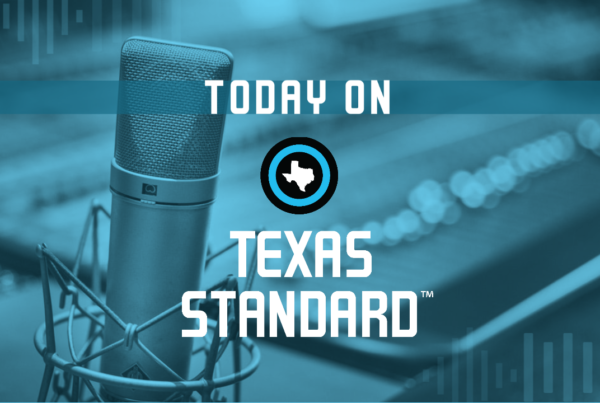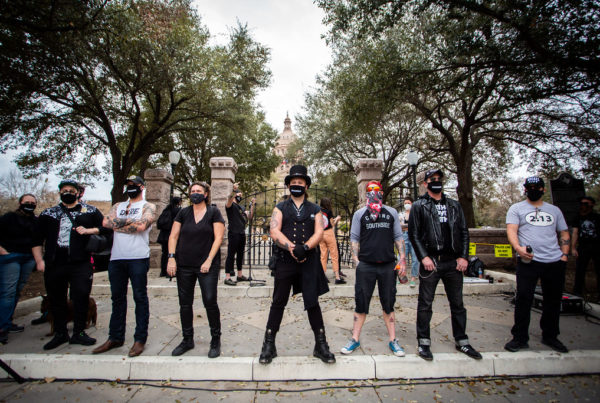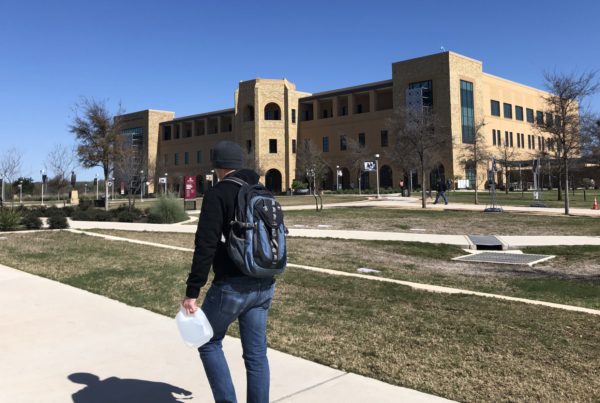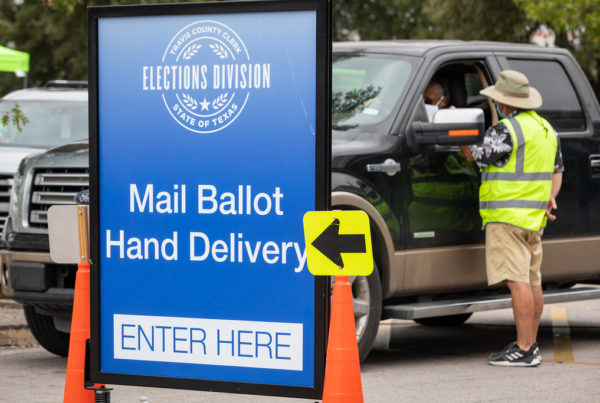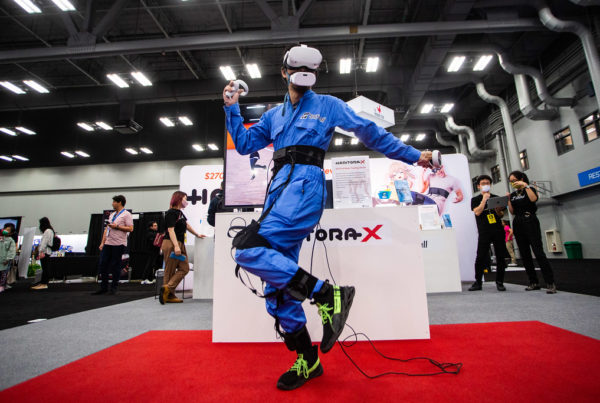Mixed reality is finding its way out of gaming and into the classrooms.
The University of St. Thomas has begun to incorporate mixed reality — an emerging technology that projects virtual images onto real-life objects — into the curriculum of its accelerated nursing program.
Beginning last fall, nursing students at the school’s Shenandoah location in Montgomery County started to explore simulations that gave them “hands-on” experience and exposure to some of the sensitive situations of the job. The first simulation asks student nurses to assess a pediatric patient with signs of bruising and scrapes. Students put on a mixed reality headset and run through the scenario like they would in the real world.
Reagan Pair, a student in the program, listened to the heart and lungs of a 5-year-old boy with a holographic stethoscope and asked questions to the patient’s mother. There were certain clues in the simulation that led Pair to suspect child abuse.
Professor Jonathan Reynolds is standing on the side for support. He thinks the simulation can help students notice details, build intuition and master soft skills.
“What this is trying to do is to help them learn how to do their assessment without getting emotional in front of the patient,” Reynolds said. “That can scare them and they can just leave when that patient actually needs help.”
Students typically get first exposure to these kinds of situations during clinical rotations in hospitals or clinics. Those opportunities dried up during parts of the pandemic, as hospitals restricted access to everyone except necessary personnel.
Otherwise, students practice on mannequins. The simulations are a big step up,” said Kristen Tamez, director of nursing services.
“We have great high fidelity mannequins, but there’s no emotions on the face,” Tamez said. “In mixed reality, you learn how to speak to those people, and how to visually assess. You don’t get that with a mannequin.”
More recently, the school added a mental health simulation, in which students need to recognize signs of alcohol withdrawal. Mike Kramer, a recent graduate who works as an Emergency Department nurse, said it’s common to see these types of patients in his job.
He first tried the simulation back in November.
“I’m in the Emergency Department right now in March, so it wasn’t that long ago,” Kramer said. “I see (these patients) all the time. And (the simulation) is the closest thing you’re going to get without getting somebody actively withdrawing from alcohol.”
St. Thomas is adopting the technology at a time when nursing schools are cramped for instruction. The statewide nursing shortage, which is projected to reach 60,000 nurses by the end of the year, is in part fueled by a dearth of nursing educators.
A national report from the American Association of Colleges of Nursing found that 80,000 qualified applicants were turned away in 2019 because of insufficient staff or budget constraints.
Nursing Director Kristen Tamez said the headsets have helped cut her staffing needs in half for this part of the program. It could allow the school to accept more students, and the program could help further chip away at that shortage, Tamez said.
“If I cannot find enough faculty or if there aren’t enough hospitals to support the number of students that we have, we have to find a way to train them,” Tamez said. “Mixed reality is the best way I’ve seen yet to do that.”


